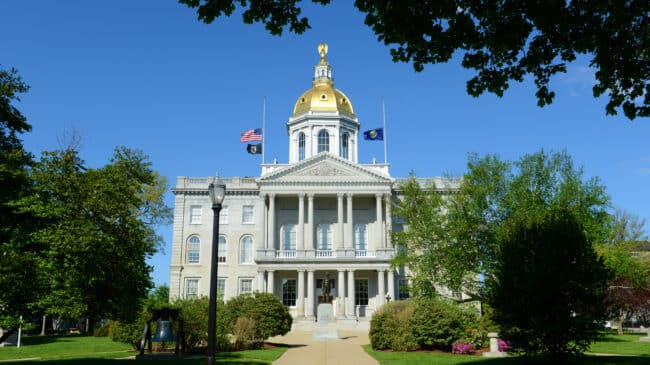A version of the following public comment was submitted to the New Hampshire Senate Education Committee on April 8, 2025.
New Hampshire House Bill 741-FN would make it easier for students to find a public school that best fits their needs. The legislation would let students attend public schools outside their district or catchment area if space is available for free. Additionally, it ensures that districts cannot discriminate against transfer applicants based on their academic abilities.
The proposal also includes excellent state and district-level transparency provisions, requiring districts to post their available capacity by grade level on their websites. Moreover, the New Hampshire Department of Education would annually publish district-level open enrollment data on its website, including the number of transfer students, the number of rejected transfer applicants, and why those applications were denied. If codified, New Hampshire would be the 10th state to adopt both strong cross- and within-district open enrollment laws, according to Reason Foundation’s open enrollment scoresheet.
Overall, it’s a strong bill since students could attend any public school with open seats for free, regardless of where they live. It also would implement excellent transparency provisions at the state and district levels.
However, H.B. 741-FN can still be strengthened. School districts should also be required to post their open enrollment policies and procedures on their websites so applicants know how, when, and where to apply. It should also make clear that school districts cannot discriminate against applicants based on their disabilities.
Lastly, the proposal should include an appeals process for rejected applicants. Under this process, school districts should be required to inform denied applicants in writing of the reasons for their denials, and rejected applicants should be able to appeal their denial to an entity other than the rejecting district.
Strong open enrollment laws ensure that students can attend schools that are the right fit. Many students use these programs to enroll in A or B-rated school districts. Others use it to escape bullying, access Advanced Placement (AP) courses or specialized learning models, enjoy smaller class sizes, or shorten their commutes.
K-12 open enrollment is popular and widely used. For example, 22% of Delaware students and 28% of Colorado students in public schools use open enrollment to attend schools that are the right fit.
California’s Legislative Analyst’s Office’s 2016 report and Reason Foundation’s 2023 report both show that the competitive effects of open enrollment can encourage districts to improve. In a 2023 EdChoice report, district administrators in Arizona, North Carolina, Indiana, and Florida stated that open enrollment encouraged them to innovate by creating or improving existing programs to attract and retain students.
According to national polling released by EdChoice in February 2025, open enrollment is supported by 74% of school parents. It also enjoys bipartisan support: 77% of Democrats, 74% of Republicans, and 74% of independents favor allowing families to attend schools across district lines. This is why open enrollment bills signed into law in Idaho, Montana, and West Virginia during the 2023 legislative sessions enjoyed significant bipartisan support.
Adopting a robust open enrollment policy in New Hampshire would help ensure that public schools are available to all students and empower families to find public schools that are the right fit.

